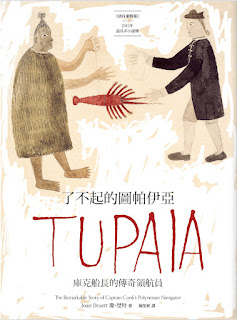Because I have sailed with so many Filipino shipmates, I am particularly interested in their stories.
The fellow above has a particularly sad one. He is Wendell Pineda, who works with an engine crew. After his first contract he went home, and spent three weeks in quarantine, but before he could see his wife and two-year-old daughter, his company requested his urgent return to sea.
(Photograph: Aljon Malanjit/ITF Seafarers’ Trust)
Among the hundreds of thousands of seafarers left stranded by Covid-19, perhaps none have faced an ordeal as extreme as that of the i-Kiribatis.
Last weekend, after a year-long odyssey across continents – shuttled between foreign nations and locked out of their homeland as waves of coronavirus closed down previously safe routes – that ordeal finally came to an end.
In a palm-fringed courtyard in Tarawa, the capital of the small Pacific island nation of Kiribati, tears and shouts of joy greeted 141 seafarers during an emotional reunion with families they had not seen for almost two years. Temware Iotebwa, 39, said that at first he did not spot his children – his son, Tawati, 15, and daughters Sherlene, 11, Eilene, 6, and three-year-old AyMe – in the crowd. But their shouts quickly drew tears to his eyes.
Iotebwa, an able seaman, had worked a month of a nine-month contract on the Hamburg Süd/Maersk container ship MV Monte Pascoal, when the pandemic was declared. He disembarked in Belgium, before being flown to Fiji.
He and his crewmates have spent the past nine months in limbo, sharing cramped hotel rooms and unable to tell their families when they would see them again.
Of the estimated 1.7 million seafarers worldwide, more than half are from developing countries such as Kiribati, a low-lying nation of 33 islands with one of the lowest standards of living in Oceania and a poor healthcare system. Concerned that it might not be able to cope, Kiribati responded to the pandemic in 2020 by closing its borders. The strategy successfully kept Covid cases at zero.
But for Iotebwa and his fellow i-Kiribati seafarers, it meant a year of hell, caught in the middle of protracted negotiations between the shipping companies, the International Chamber of Shipping and a Kiribati government fearful of the risks of allowing the return of seafarers who may have been exposed to Covid.
Finally, in April 2021, after months of talks, the Kiribati government agreed to repatriate the seafarers, who would first be quarantined in Fiji. But then Fiji saw a sudden spike in coronavirus cases and the Kiribati government reversed its policy. After allowing about 60 seafarers back into the country, the authorities closed the border again, with no exceptions.
Iotebwa had just been told he was about to be flying home when it happened. It was his lowest moment, he says.
“My excitement turned to hopelessness when I heard the news,” he says over a video link from Tarawa. “The waiting time turned from days to months. My kids missed me very much and I missed them.”
His family were worried too; the Grand Melanesian Hotel in the Fijian town of Nadi, paid for by the shipping company, was overcrowded and uncomfortable with no privacy.
“It felt like a prison,” he says. “My wife, Takentemwanoku Matiota Iotebwa, constantly reminded me to be careful and to stay away from people to avoid getting infected. She was very worried.”
They kept their spirits up by playing games of croquet and tug-of-war in the lobby.
He is happy now he is back at home, but there is sadness, too. One of his friends lost his father, another his wife. Marriages broke up under the strain of waiting and the ordeal has taken a financial toll on the families. The seafarers are often their families’ main breadwinners and a source of remittances. They stopped being paid in early 2021, and now worry about their employment prospects with borders remaining closed.
“I don’t blame anyone because this pandemic can happen anytime and anywhere,” says Iotebwa. “But if my government was smart, it could have found other ways to bring us seafarers home sooner. Other poorer countries arranged their seafarers’ return immediately while still on lockdown.”
The World Health Organization (WHO) and the International Labour Organization (ILO) held a crisis meeting this month with transport organisations “as a matter of urgency” to protect the rights of those working at sea. Seafarers provided remittances to 12% of households in Kiribati in 2010, and the sector is an important source of employment.
Pastor Matthias Ristau, a chaplain at the German Seamen’s Mission, helped care for 150 of i-Kiribati’s seafaring community who were stuck in a youth hostel in Hamburg for months before being flown to Fiji. “I could see these were really tough guys but after so many months at sea they were already exhausted,” he says.
“And all the time hearing about families breaking, marriages splitting … I know it will take them a long time to finally arrive at home mentally.” Natalie Shaw, director of employment affairs at the International Chamber of Shipping (ICS), says the plight of the i-Kiribati is the biggest challenge she has faced in 18 years – including piracy.

















